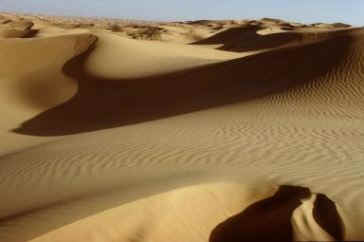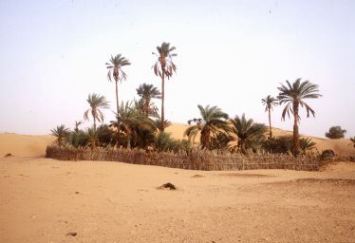The Desert Biome
The desert biome has the lightest cover of plants of any biome. Lack of moisture prevents plants from establishing themselves in this harsh climate. Many unique adaptations to the extreme heat and lack of moisture enable some plants to survive. Plants adapted to drought are called xerophytes. Aridisol soils, common to deserts, are typically coarse, lack much organic material, and are often weakly developed.
Dry Desert
The dry deserts are typically found in subtropical latitudes and are produced by subsidence associated with the eastern sides of the subtropical high. These are extremely dry regions, some places hardly receiving any measurable precipitation during the year. Plant cover is non-existent over much of the dry desert.
 Figure 13.23
Grand Erg Occidental
Desert, Algeria
Figure 13.23
Grand Erg Occidental
Desert, Algeria
(Photo credit: J.Van Acker, FAO Used with
permission)
Like many dry deserts, a layer of coarse
material blankets the surface. This "desert pavement"
protects the underlying surface from erosion. When
disturbed, wind easily dislodges particles and transports
them away in a process called deflation.
This makes the establishment of plants very difficult.

Figure 13.24 Desert encroaching on desert oasis (Photo credit: Mauritania. I.Balderi,FAO Used with permission)
Plants occur only under the most favorable microclimatic settings like those surrounding an oasis. Oases are created where the water table is near the surface. Groundwater can be easily extracted to support vegetation and wildlife.
Plant growth and reproduction are quite slow under desert conditions. Surface erosion by wind or water restricts the establishment of plants. Infrequent storms causes water to sweep across the barren surface carrying away massive amounts of material along with plants. The rapid movement of sand dunes covers and prevents the establishment of a plant cover too.